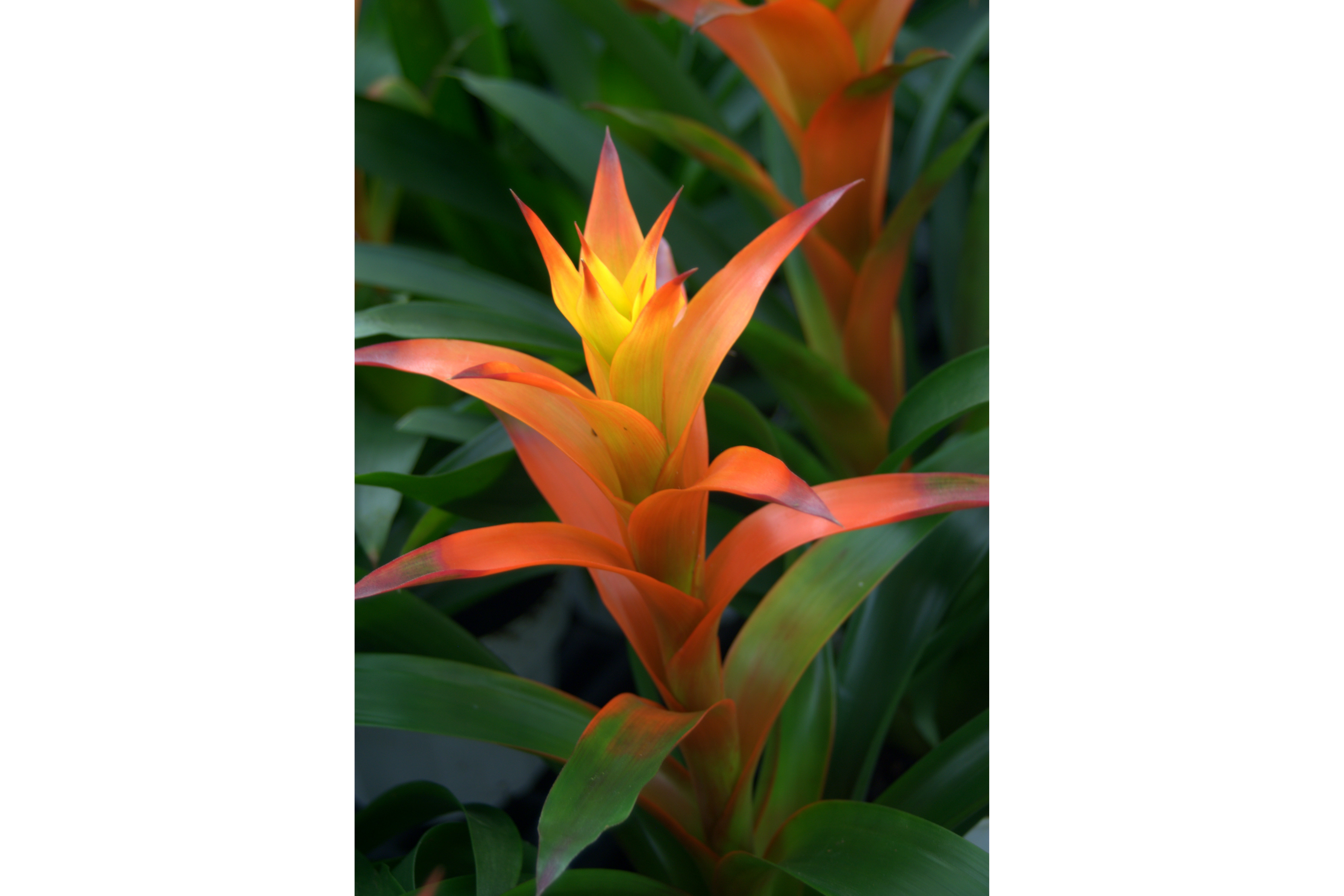Tufted airplant
(Bromeliad guzmania)

Description
Bromeliads are a diverse family of plants that are native to the tropical and subtropical regions of the Americas. The genus Guzmania is one of the most popular groups of bromeliads, known for their vibrant and long-lasting blooms. In this article, we will delve into the world of Bromeliad Guzmania, discussing their history, taxonomy, morphology, cultivation, and care. History: The first description of Guzmania was published by the French botanist, Charles Plumier, in 1703. The genus was named in honor of the Spanish naturalist, Anastasio Guzman, who was a contemporary of Plumier. Since then, numerous species of Guzmania have been discovered and described, with the current count standing at around 150. Taxonomy: Guzmania belongs to the family Bromeliaceae, which is divided into around 75 genera and 3,000 species. Within the genus Guzmania, there are two subgenera: Guzmania and Mezobromelia. The former contains most of the species, while the latter has only two. Morphology: Guzmania is a rosette-forming plant, meaning that its leaves grow in a circular pattern around a central point. The leaves are typically long and narrow, with pointed tips and smooth edges. They are often colored green, but can also be variegated with stripes or spots of red, yellow, or white. The flowers of Guzmania are held on a central spike that emerges from the center of the plant. The spike can be quite tall, reaching up to several feet in some species. The flowers are typically small and inconspicuous, but are surrounded by large, colorful bracts. The bracts can be red, orange, yellow, pink, or purple, and can remain on the plant for several months. Cultivation: Guzmania is a popular houseplant, as it is relatively easy to care for and produces attractive blooms. The plants prefer bright, indirect light and warm temperatures between 65 and 80 degrees Fahrenheit. They should be watered regularly, keeping the soil moist but not waterlogged. Guzmania can be grown in a variety of potting mixes, but prefer those that are well-draining and rich in organic matter. They can also be grown mounted on a piece of wood or other support, as long as they receive regular misting to keep their roots hydrated. Propagation: Guzmania can be propagated by removing the offsets that form around the base of mature plants. These offsets can be potted up in fresh soil and treated as mature plants. Guzmania can also be propagated by seed, though this is a more time-consuming process that requires special equipment. Pests and Diseases: Guzmania is relatively resistant to pests and diseases, but can occasionally be affected by spider mites, mealybugs, or scale insects. These pests can be controlled by washing the plant with a mild soap solution or by using a horticultural oil. Guzmania can also be susceptible to root rot if they are overwatered or planted in poorly-draining soil. Conclusion: Bromeliad Guzmania is a beautiful and easy-to-care-for plant that is sure to brighten up any indoor space. With their colorful blooms and striking foliage, these plants are a favorite among houseplant enthusiasts. By following the tips outlined in this article, you can successfully cultivate and care for your own Bromeliad Guzmania, bringing a little piece of the tropics into your home.
Taxonomic tree:







